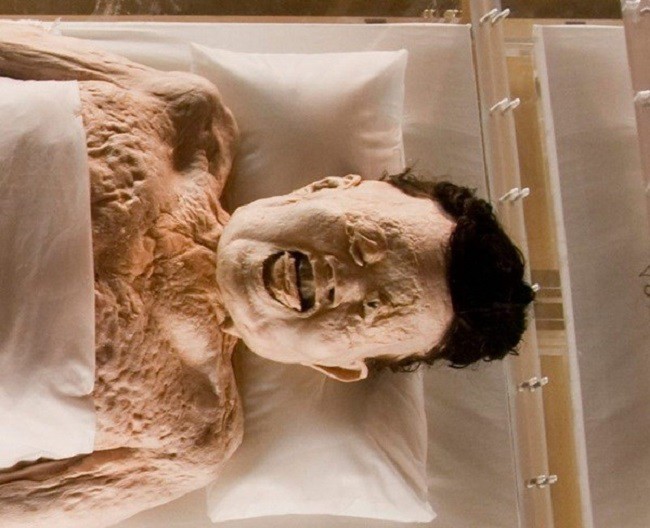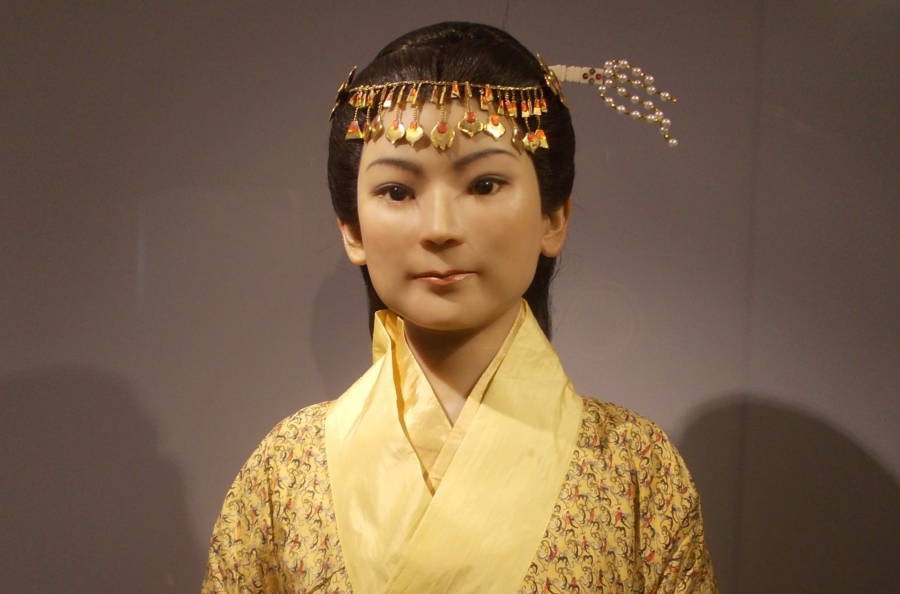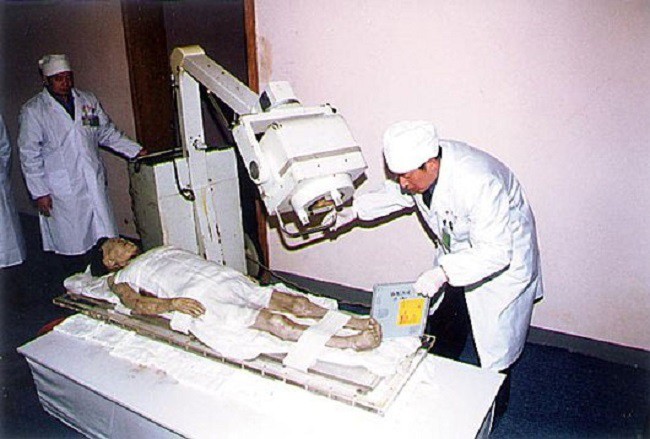In 1971, when workers in Trường Sa City, Hunan Province (China) were digging in the ground, they suddenly discovered a massive tomb. Scientists and archaeologists were immediately called in to examine the mummy inside this tomb, thereby opening a series of puzzling mysteries that to this day, people still have to ask a question. big…
After investigation, scientists determined that it was the mummy of a woman named Xin Zhui, also known as Lady Dai, wife of Marquis Dai, who lived in the Han Dynasty (206 BC – 220 AD). Ms. Xin Zhui was confirmed to have died in 163 BC, which means that her mummy is more than 2,000 years old. The amount of time it takes for the human body to decompose is not small, whether it is preserved by chemicals or by temperature.

However, the strange thing that startled scientists is that this woman’s skin is still quite soft, her hair is still black and thick, even the joints of her limbs can still stretch normally and it is worth it. The most amazing thing is that there is still blood in the veins of this mummy – the researchers determined that it was blood type A. Since then, Ms. Xin Zhui’s body has been widely recognized as a The best preserved mummy in history and also the most mysterious mummy in the world.
The world’s strangest mummy
Xin Zhui’s funnel-shaped coffin contains more than 1,000 precious artifacts, including makeup, toiletries, hundreds of pieces of lacquer, and 162 wooden carvings representing servants. Besides, there is a tray of rice available for Xin to enjoy when he returns to the other side of the world.
But what surprised scientists the most was the state of Ms. Xin’s body when it was discovered, because it was no different from the body of a person who had just died.


Mrs. Xin’s skin is still as soft as a living person, retaining a certain amount of moisture and elasticity. The hair is still black, even the eyelashes, eyebrows, and nose hair are intact.
In fact, the photos people see today do not reflect the true state of Ms. Xin’s body when she was first discovered. Because, as soon as the scientists opened the coffin lid, oxygen penetrated, causing this woman’s skin to deteriorate noticeably.
The researchers found that all of Ms. Xin’s organs were intact and her veins were still bleeding. These veins also showed blood clots, revealing that the main cause of Ms. Xin’s death was a heart attack. A variety of other ailments were also found throughout Xin Zhui’s body, including gallstones, high cholesterol, high blood pressure and liver disease.

Restoration image (right) and mummy of Mrs. Xin Zhui.

And yet, pathologists even found 138 undigested melon seeds in Ms. Xin’s stomach and intestines. Since such seeds usually take an hour to digest, it is perfectly reasonable to assume that melons were Ms. Xin’s last meal, which she ate only minutes before suffering a heart attack and death.
The question is how is this mummy so well preserved?
When discovered, scientists were also amazed at the discreetness and elaborateness in the way the tomb was built. Lying more than 12 meters underground, Xin Zhui is wrapped in 20 layers of silk, placed inside a sealed 4-layer coffin. The layers of coffins are interspersed with charcoal and the outside is sealed with clay, to prevent bacteria from entering.

Her body was marinated in about 21 gallons of an unnamed liquid, which scientists tested and found it was mildly acidic and contained traces of magnesium. But what is the name of that liquid and how to prepare it, until today, scientists still do not have an exact answer. It was this liquid that perfectly preserved the mummy, with all the internal organs, including the brain, still preserved.

It is known that the researchers performed an autopsy in December 1972. The results showed that she had died at the age of 50. Despite this, she still outlived her husband and son, as both were euthanized. found buried in the same grave next to her. However, their remains have decomposed over time and are no longer as intact as hers.
According to historians, Ms. Xin Zhui was considered a respectable aristocratic woman who lived a lavish and luxurious life. Either way, her mummy has presented modern scholars with a series of difficult questions that, if answered, would be of immense value.








